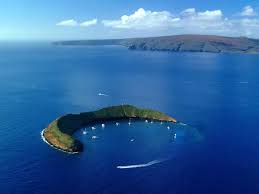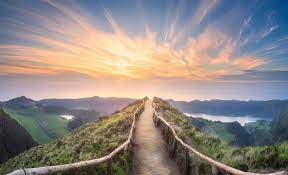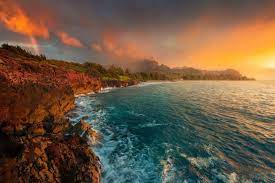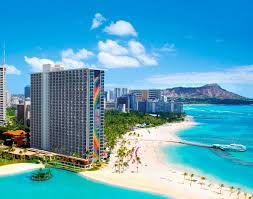
Exploring the Hidden Gems: Non-Tourist Areas of Hawaii
When it comes to Hawaii, most people envision pristine beaches, bustling resorts, and popular tourist attractions. However, beyond the well-known spots lies a world of hidden gems waiting to be discovered. If you’re seeking a more authentic and off-the-beaten-path experience, exploring the non-tourist areas of Hawaii is a must.
One such area that often goes unnoticed by tourists is the North Shore of Oahu. Known for its legendary surf breaks like Pipeline and Sunset Beach, this region offers a laid-back vibe that contrasts with the bustling city life of Honolulu. Take a stroll along the charming town of Haleiwa, where you’ll find local boutiques, art galleries, and mouthwatering food trucks serving up fresh seafood and tropical treats.
For those looking to escape the crowds and immerse themselves in nature’s tranquility, head to Kauai’s Napali Coast. This rugged coastline boasts breathtaking cliffs, lush valleys, and cascading waterfalls. While many tourists opt for helicopter tours or boat cruises, adventurous souls can embark on a challenging hike along the Kalalau Trail. The reward at the end is a secluded beach surrounded by towering cliffs – a true paradise for nature enthusiasts.
On Maui’s eastern side lies Hana – a small town that feels like stepping back in time. The Road to Hana is an iconic drive known for its stunning landscapes with countless waterfalls and lush rainforests. Take your time exploring this scenic route and make stops at lesser-known attractions such as Wailua Falls or Waianapanapa State Park’s black sand beach. Experience the true beauty of Maui away from the crowds.
If you’re craving an authentic cultural experience, Molokai is an island worth visiting. With its strong ties to Hawaiian traditions and its commitment to preserving its heritage, Molokai offers visitors an opportunity to connect with the local community. Take part in a traditional hula lesson, learn about taro farming, or attend a cultural festival. This unspoiled island offers a glimpse into the rich history and traditions of Hawaii.
Lastly, for those seeking solitude and serenity, the Big Island’s South Point is the perfect destination. This remote area is known for its rugged coastline, volcanic landscapes, and crystal-clear waters. Take a dip in one of the world’s most famous snorkeling spots at Kealakekua Bay or hike to the mesmerizing Green Sand Beach. Here, you’ll find yourself surrounded by nature’s wonders without the hustle and bustle of tourist crowds.
Exploring Hawaii’s non-tourist areas allows you to experience the true essence of these beautiful islands. From untouched natural wonders to authentic cultural encounters, these hidden gems offer an opportunity to connect with Hawaii on a deeper level. So venture off the beaten path and discover the lesser-known treasures that make this paradise truly unique.
7 Frequently Asked Questions About Non-Tourist Areas in Hawaii
- What is the cost of living in Hawaii?
- What is the job market like in Hawaii?
- How is the housing situation in Hawaii?
- What are the best neighborhoods to live in Hawaii?
- Are there any safety concerns living in Hawaii?
- Is public transportation available in Hawaii?
- Are there any cultural events and activities for locals to enjoy in Hawaii?
What is the cost of living in Hawaii?
The cost of living in Hawaii is generally higher compared to many other states in the United States. Several factors contribute to this higher cost, including the state’s remote location, limited land availability, and a heavy reliance on imported goods.
Housing expenses tend to be the largest portion of one’s budget in Hawaii. The cost of purchasing or renting a home can be significantly higher than the national average. Additionally, utilities such as electricity and water may also be more expensive due to the state’s dependence on imported resources.
Transportation costs can also be higher in Hawaii. Fuel prices tend to be above the national average, and vehicle registration fees and insurance rates can add up. While public transportation options are available on some islands, they may not be as extensive or convenient as in larger metropolitan areas.
Food and groceries are also more expensive in Hawaii due to the need for importing many products. Fresh produce and certain goods that cannot be locally sourced may have higher price tags. However, farmers’ markets offer an opportunity to purchase local produce at more affordable prices.
Other expenses like healthcare, education, and entertainment can vary depending on individual circumstances and choices. It’s important to note that while living costs may be higher in Hawaii overall, salaries and wages also tend to reflect this higher cost compared to other states.
It is essential for individuals considering a move or extended stay in Hawaii to carefully research and budget for their specific needs based on their desired lifestyle and location within the state.
What is the job market like in Hawaii?
The job market in Hawaii is unique due to its geographical location and reliance on certain industries. Here are some key aspects of the job market in Hawaii:
- Tourism and Hospitality: The tourism industry is a significant driver of Hawaii’s economy, providing numerous job opportunities. Hotels, resorts, restaurants, and tour operators often have a high demand for workers in positions such as hotel staff, tour guides, chefs, and customer service representatives.
- Construction and Real Estate: With ongoing development projects and a growing population, the construction industry plays a vital role in Hawaii’s job market. Opportunities exist for construction workers, architects, engineers, project managers, and real estate professionals.
- Healthcare: The healthcare sector in Hawaii continues to expand as the population grows and ages. Job prospects are available for healthcare professionals such as nurses, doctors, medical technicians, therapists, and administrators.
- Education: Hawaii has a strong emphasis on education at all levels. Teaching positions are available in public schools, private institutions, and universities. Additionally, there are opportunities in administration and support roles within educational institutions.
- Military: The presence of military bases in Hawaii creates employment opportunities within the defense sector for both military personnel and civilian contractors.
- Agriculture: Although not as prominent as it once was, agriculture still contributes to the job market through farming operations producing crops like coffee, macadamia nuts, tropical fruits, flowers, and livestock.
- Technology: The technology sector is growing steadily in Hawaii with an increasing number of tech companies establishing a presence on the islands. Opportunities exist in fields such as software development, IT support services, cybersecurity specialists, and data analysts.
It’s important to note that competition for jobs can be fierce due to the desirability of living in Hawaii. Additionally, the cost of living is relatively high compared to other states which can impact wages. However, with its unique blend of natural beauty and cultural diversity along with a strong sense of community, many find the job market in Hawaii to be rewarding and fulfilling.
How is the housing situation in Hawaii?
The housing situation in Hawaii is known to be challenging and unique. The state faces several factors that contribute to the high cost and limited availability of housing.
One significant factor is the limited amount of land available for development. Being a group of islands, Hawaii has a finite amount of space, and this scarcity drives up the prices. Additionally, strict zoning regulations and environmental protections further restrict land use, making it difficult to increase housing supply.
Another factor is the high demand for housing due to the state’s desirability as a tourist destination and its growing population. Many people dream of living in Hawaii, which creates competition for available homes and drives up prices.
The cost of living in Hawaii is generally higher compared to other states in the US. This includes not only housing but also utilities, groceries, and transportation. The high cost of living can make it challenging for residents to afford suitable housing, particularly for those with lower incomes.
Furthermore, there is a significant disparity between wages and housing costs in Hawaii. Many workers struggle to find affordable housing that aligns with their income levels. This issue has led to concerns about workforce retention and affordability for local residents.
To address these challenges, various initiatives have been implemented at both the state and local levels. Efforts include increasing affordable housing options through government-subsidized programs, promoting sustainable development practices, and advocating for policies that prioritize affordable housing solutions.
While progress has been made in addressing the housing situation in Hawaii, it remains an ongoing issue that requires continued attention and innovative approaches to ensure access to affordable and adequate housing for all residents.
What are the best neighborhoods to live in Hawaii?
Hawaii is known for its stunning landscapes, beautiful beaches, and vibrant culture. When it comes to choosing the best neighborhoods to live in Hawaii, it ultimately depends on your preferences and lifestyle. However, here are a few neighborhoods that are highly regarded by residents:
- Honolulu – Located on the island of Oahu, Honolulu is the capital city of Hawaii and offers a mix of urban living with a tropical twist. Neighborhoods like Waikiki and Ala Moana provide access to world-class shopping, dining, and entertainment options, while areas like Manoa and Nuuanu offer a more residential feel with lush greenery and beautiful views.
- Kailua – Situated on the windward side of Oahu, Kailua is known for its picturesque beaches and laid-back atmosphere. The town offers a variety of outdoor recreational activities such as kayaking, hiking in the nearby mountains, and enjoying local boutiques and eateries.
- Kihei – Located on the island of Maui, Kihei is a popular choice for those seeking a relaxed beach lifestyle. With its sunny climate and stunning coastline, this neighborhood offers plenty of opportunities for water sports like snorkeling, paddleboarding, and surfing.
- Kailua-Kona – Situated on the Big Island of Hawaii, Kailua-Kona is known for its historic charm and proximity to beautiful beaches. This neighborhood offers a range of amenities including shopping centers, restaurants serving fresh seafood, and cultural attractions like the Hulihee Palace.
- Princeville – Nestled on the lush North Shore of Kauai, Princeville is renowned for its breathtaking views of Hanalei Bay and the surrounding mountains. This upscale neighborhood features luxury resorts, golf courses, hiking trails along scenic cliffsides, and easy access to stunning beaches.
It’s important to note that living costs can vary among these neighborhoods in Hawaii. Additionally, each island has its own unique characteristics, so it’s worth exploring the different islands to find the one that aligns with your preferences and lifestyle. Whether you prefer a bustling city atmosphere or a serene beachside community, Hawaii offers a wide range of neighborhoods to suit various tastes and interests.
Are there any safety concerns living in Hawaii?
Living in Hawaii certainly has its perks, but like any place, there are certain safety concerns to be aware of. Here are a few considerations:
- Natural Disasters: Hawaii is prone to natural disasters such as hurricanes, volcanic eruptions, and earthquakes. It’s important to stay informed about emergency preparedness and have a plan in place.
- High Cost of Living: Hawaii has one of the highest costs of living in the United States. This can put financial strain on residents, especially those with lower incomes. It’s crucial to budget wisely and plan for the higher expenses associated with housing, groceries, and utilities.
- Traffic and Infrastructure: In more densely populated areas like Honolulu, traffic congestion can be a challenge. Road infrastructure may not always meet the demand during peak hours, leading to longer commute times.
- Beach Safety: While Hawaii’s beaches are stunningly beautiful, it’s important to exercise caution when swimming or participating in water activities. Strong currents and powerful waves can pose risks if proper safety measures are not followed.
- Wildlife Hazards: Hawaii is home to various unique wildlife species, including sharks and venomous creatures like centipedes and some spiders. It’s essential to be aware of your surroundings when exploring nature and follow local guidelines for safety.
- Homelessness: Like many other places around the world, Hawaii faces challenges related to homelessness. While it may not directly impact every resident’s daily life, it is a social issue that communities continue to address.
Despite these concerns, millions of people live happily and safely in Hawaii every day. By being informed about potential risks and taking necessary precautions, residents can enjoy all that this beautiful state has to offer while prioritizing their well-being and safety.
Is public transportation available in Hawaii?
Yes, public transportation is available in Hawaii. The most common form of public transportation in the major cities like Honolulu and Waikiki is TheBus, operated by the Oahu Transit Services. TheBus provides extensive coverage across the island of Oahu, with routes that connect various neighborhoods, tourist attractions, shopping centers, and popular destinations.
On the neighboring islands of Maui, Kauai, and Hawaii (the Big Island), there are also public bus systems available. These systems provide transportation within their respective islands and serve both local residents and tourists.
In addition to buses, some areas in Hawaii offer other forms of public transportation. For example, on Oahu, there is a rail system called the Honolulu Rail Transit Project currently under construction. Once completed, it will provide an additional mode of transportation for residents and visitors.
It’s worth noting that while public transportation is available in Hawaii, it may not be as extensive or convenient as in some urban areas on the mainland United States. Renting a car or utilizing ride-sharing services may be more practical for exploring remote areas or if you prefer more flexibility in your travel plans. However, if you plan to stay within major cities or popular tourist areas, using public transportation can be a cost-effective and environmentally friendly option.
Are there any cultural events and activities for locals to enjoy in Hawaii?
Absolutely! Hawaii is rich in cultural events and activities that locals can enjoy throughout the year. These events offer a chance to celebrate and honor the diverse cultures that make up the Hawaiian community. Here are some popular cultural events and activities that locals can partake in:
- Aloha Festivals: Held annually on different islands, the Aloha Festivals showcase Hawaiian music, dance, food, and crafts. Locals can participate in parades, hula performances, live music concerts, and various cultural workshops.
- Merrie Monarch Festival: Considered one of the most prestigious hula competitions in the world, this week-long event takes place in Hilo on the Big Island. It features traditional hula performances by both local and international dancers, along with craft fairs and art exhibits.
- Lei Day Celebration: Held on May 1st each year, Lei Day is a statewide celebration of Hawaiian culture and the art of lei-making. Locals gather to showcase their handcrafted leis, enjoy live music and dance performances, and participate in lei-making demonstrations.
- Makahiki Festival: Celebrated during the winter months (usually November to February), Makahiki marks a time of peace, harvest, games, and feasting in ancient Hawaiian tradition. Modern-day Makahiki festivals include cultural activities like outrigger canoe races, traditional sports competitions, storytelling sessions, and delicious food offerings.
- Polynesian Cultural Center: Located on Oahu’s North Shore, this living museum offers an immersive experience into Polynesian cultures through interactive exhibits, canoe rides, traditional village tours, authentic luau dinners with live entertainment shows representing various Pacific Island nations.
- Local Craft Fairs: Throughout Hawaii’s towns and communities, you’ll find regular craft fairs where local artisans showcase their handmade crafts such as jewelry, clothing items like aloha shirts or muumuus (Hawaiian dresses), wood carvings, paintings, and more. These fairs often feature live music and food vendors as well.
- Cultural Workshops: Many organizations and community centers across the islands offer cultural workshops where locals can learn traditional arts and crafts such as lei-making, hula dancing, ukulele playing, Hawaiian language lessons, and even traditional cooking techniques.
These are just a few examples of the numerous cultural events and activities available for locals to enjoy in Hawaii. The islands are vibrant with opportunities to immerse oneself in the rich heritage and traditions that make Hawaii so unique.





